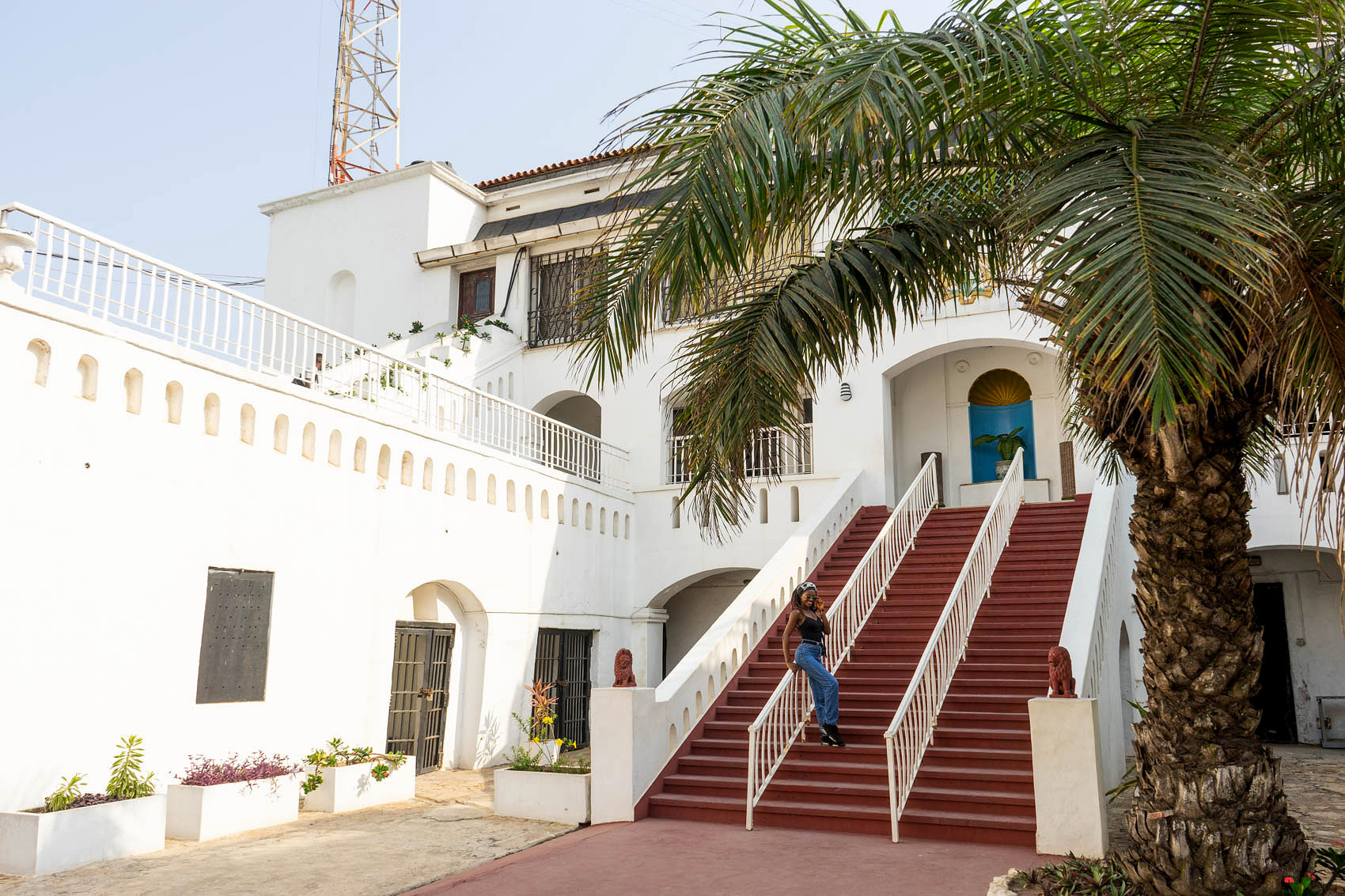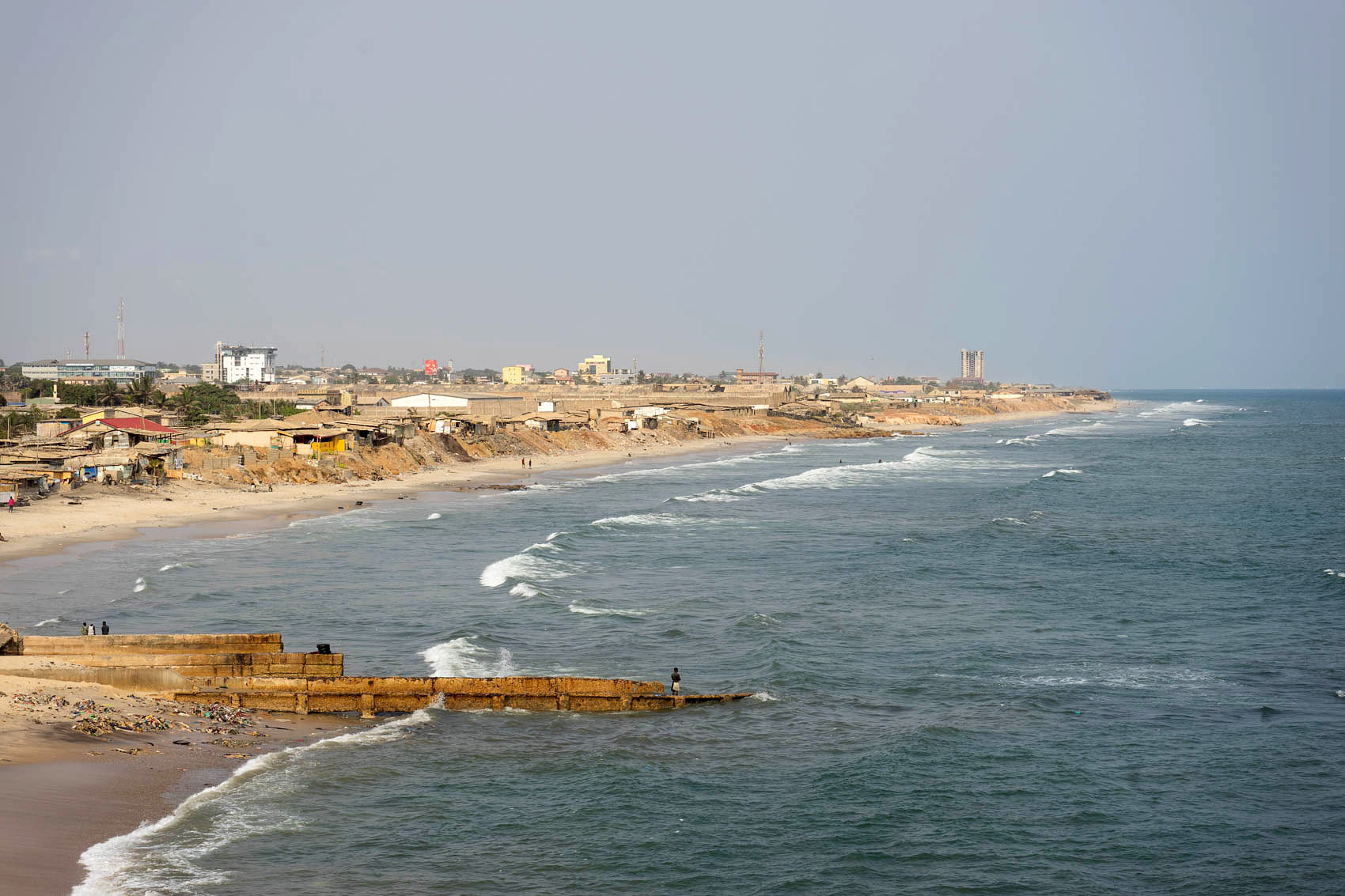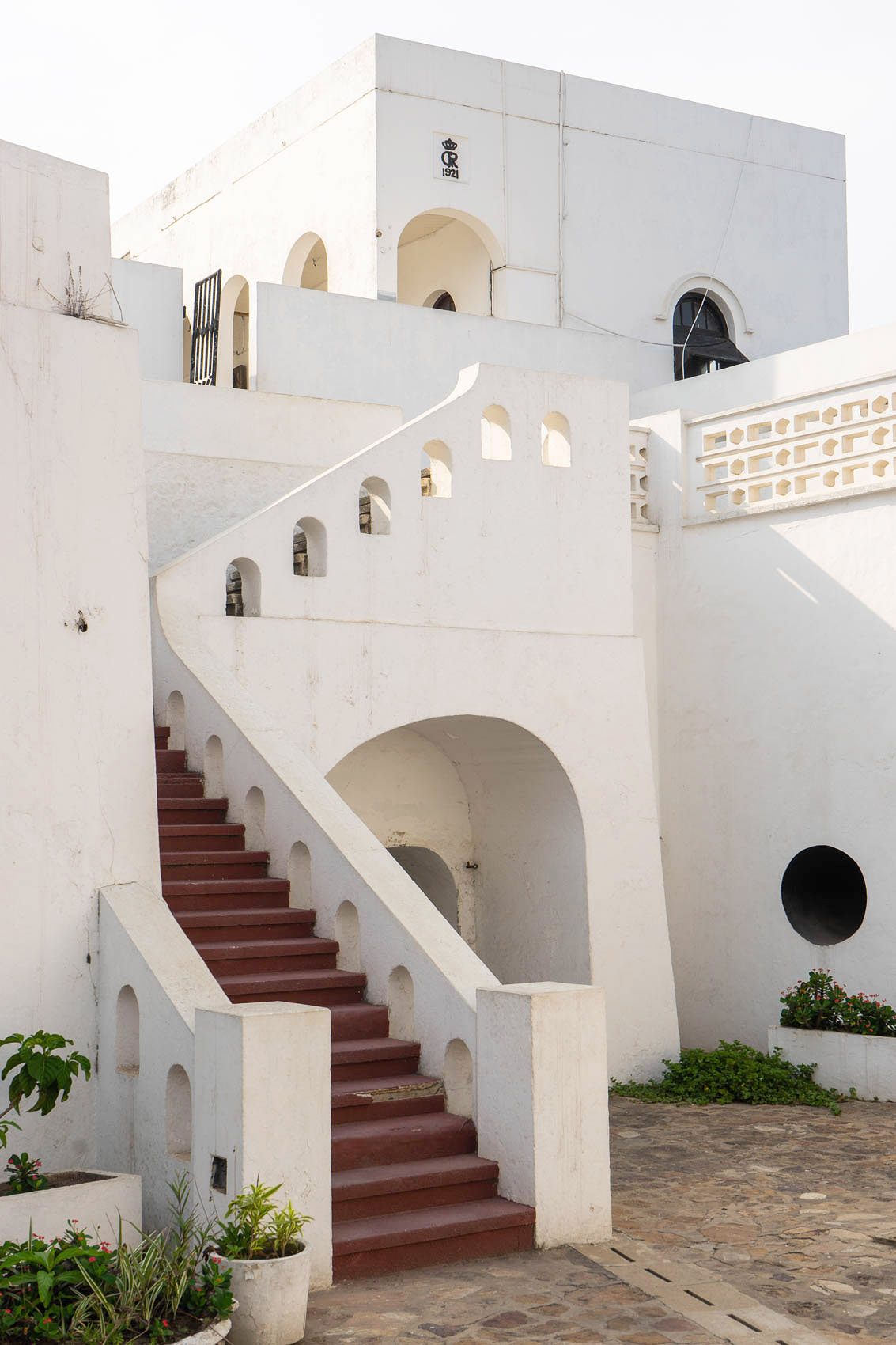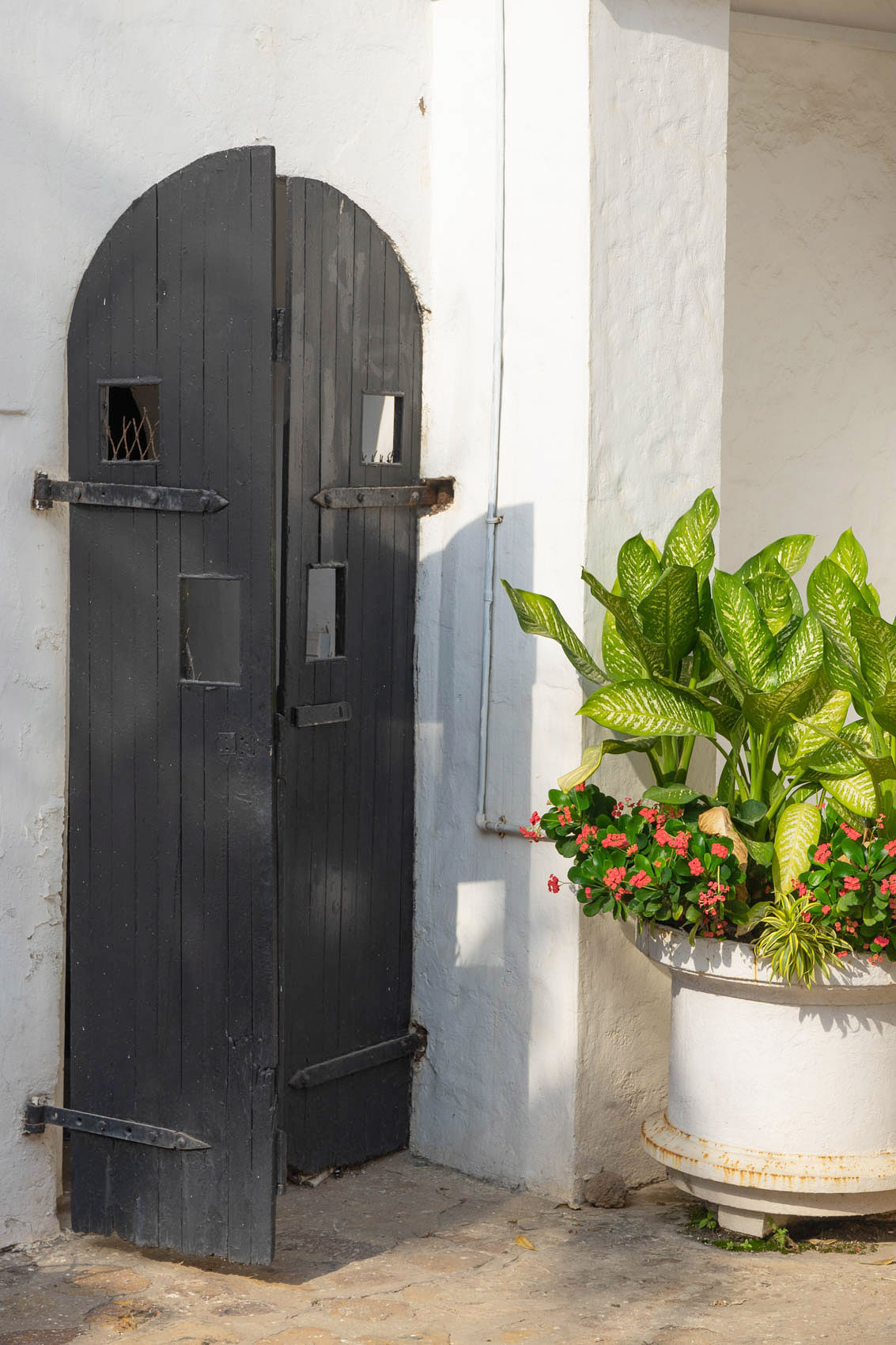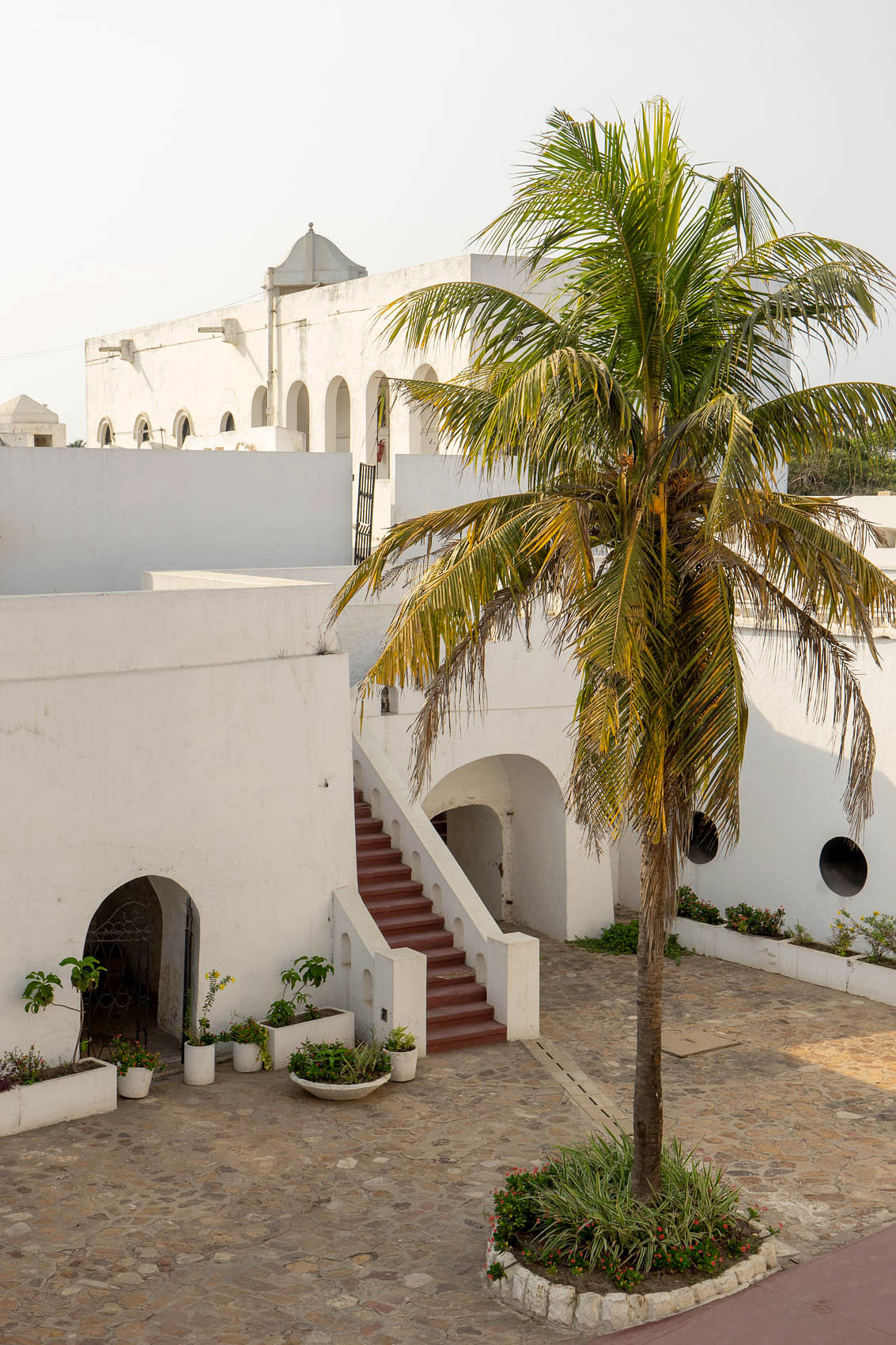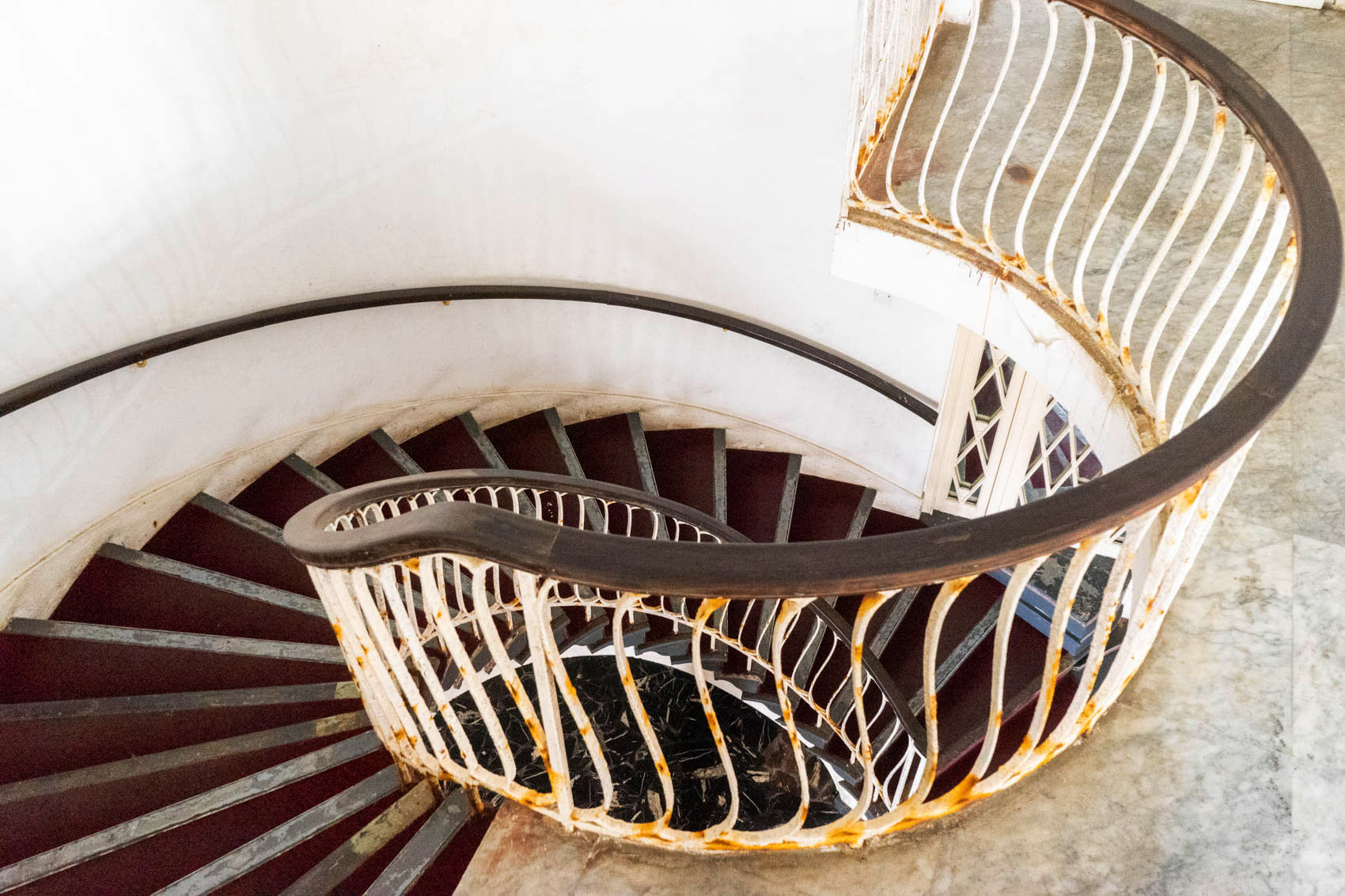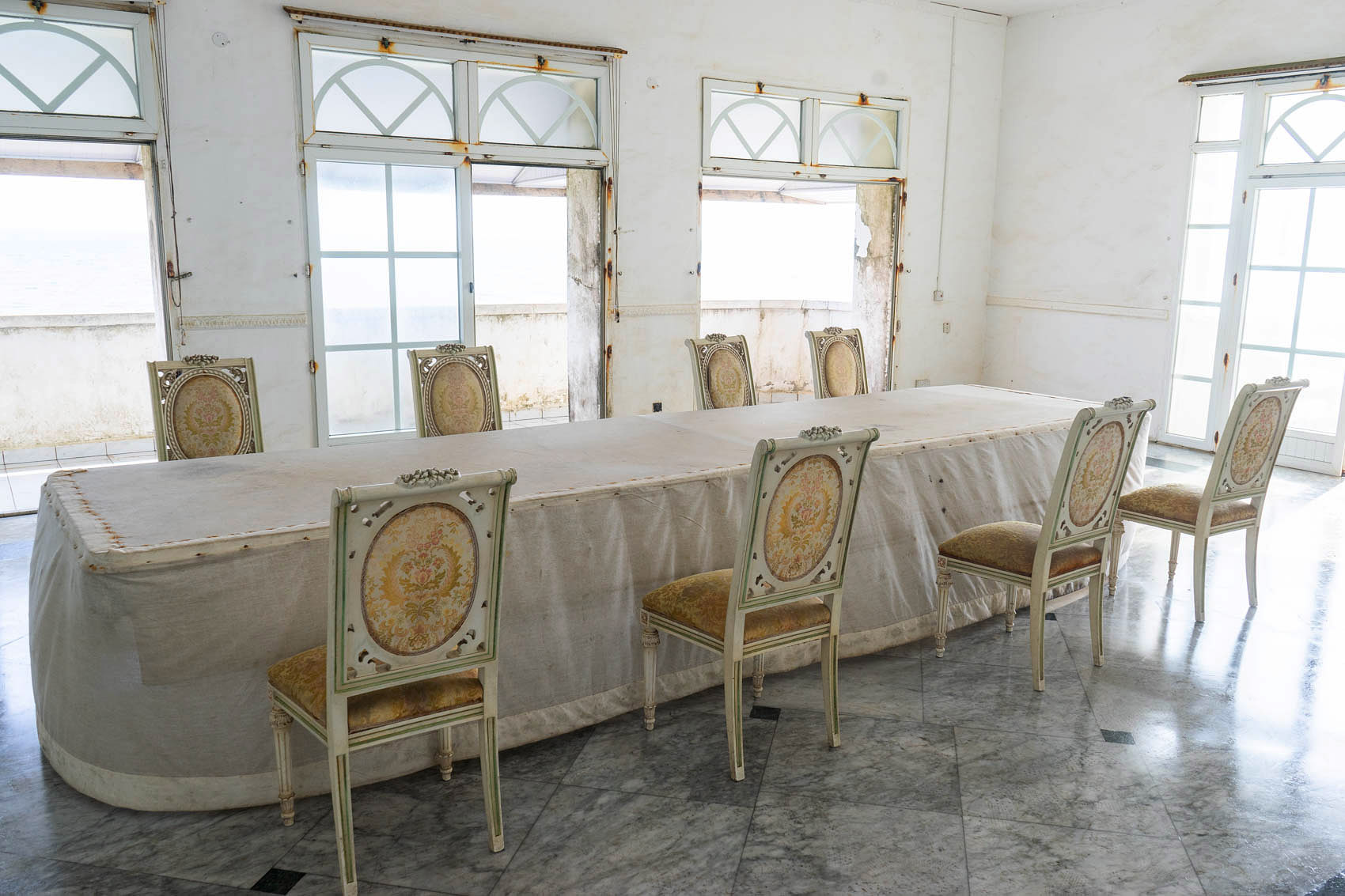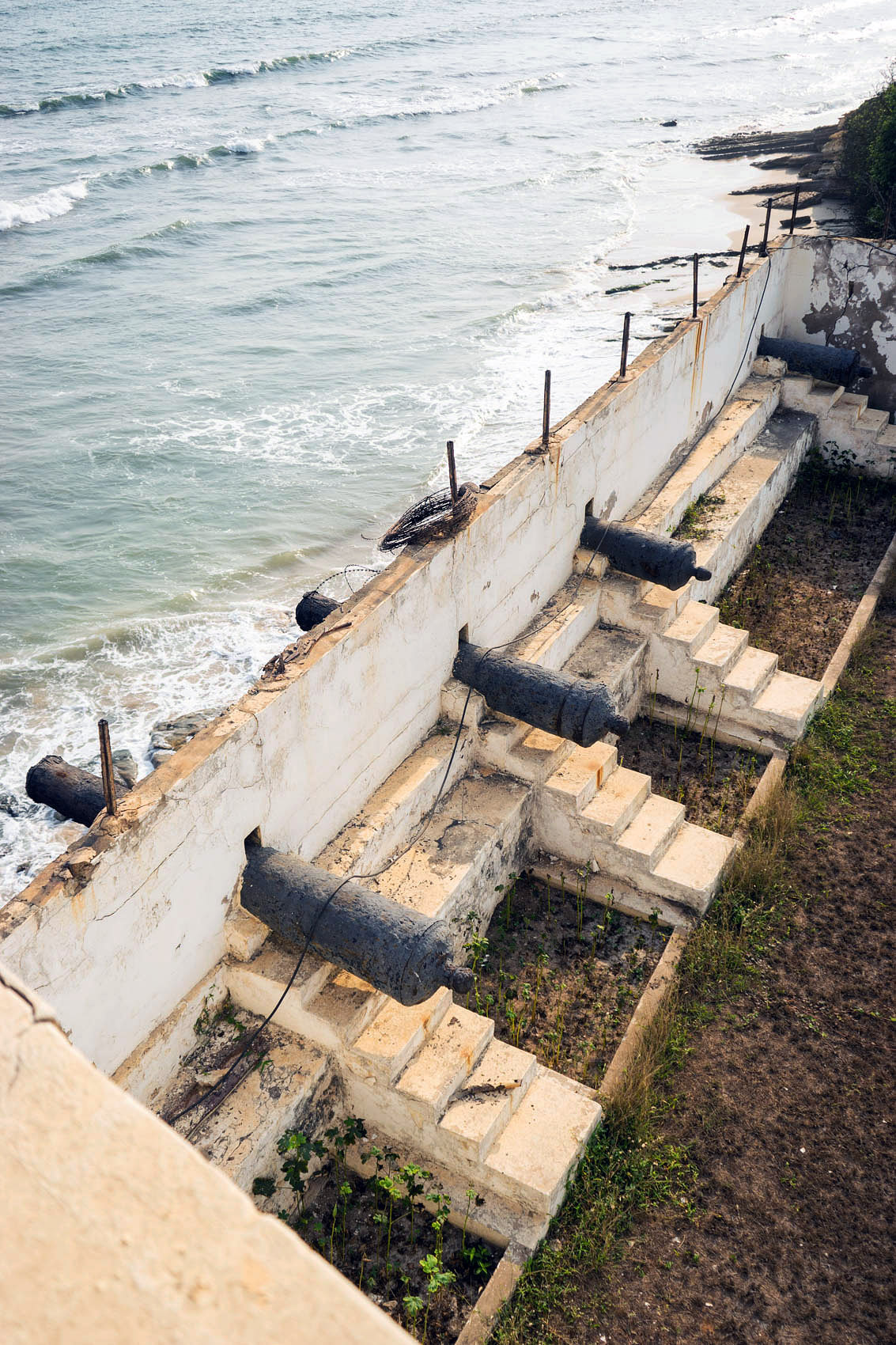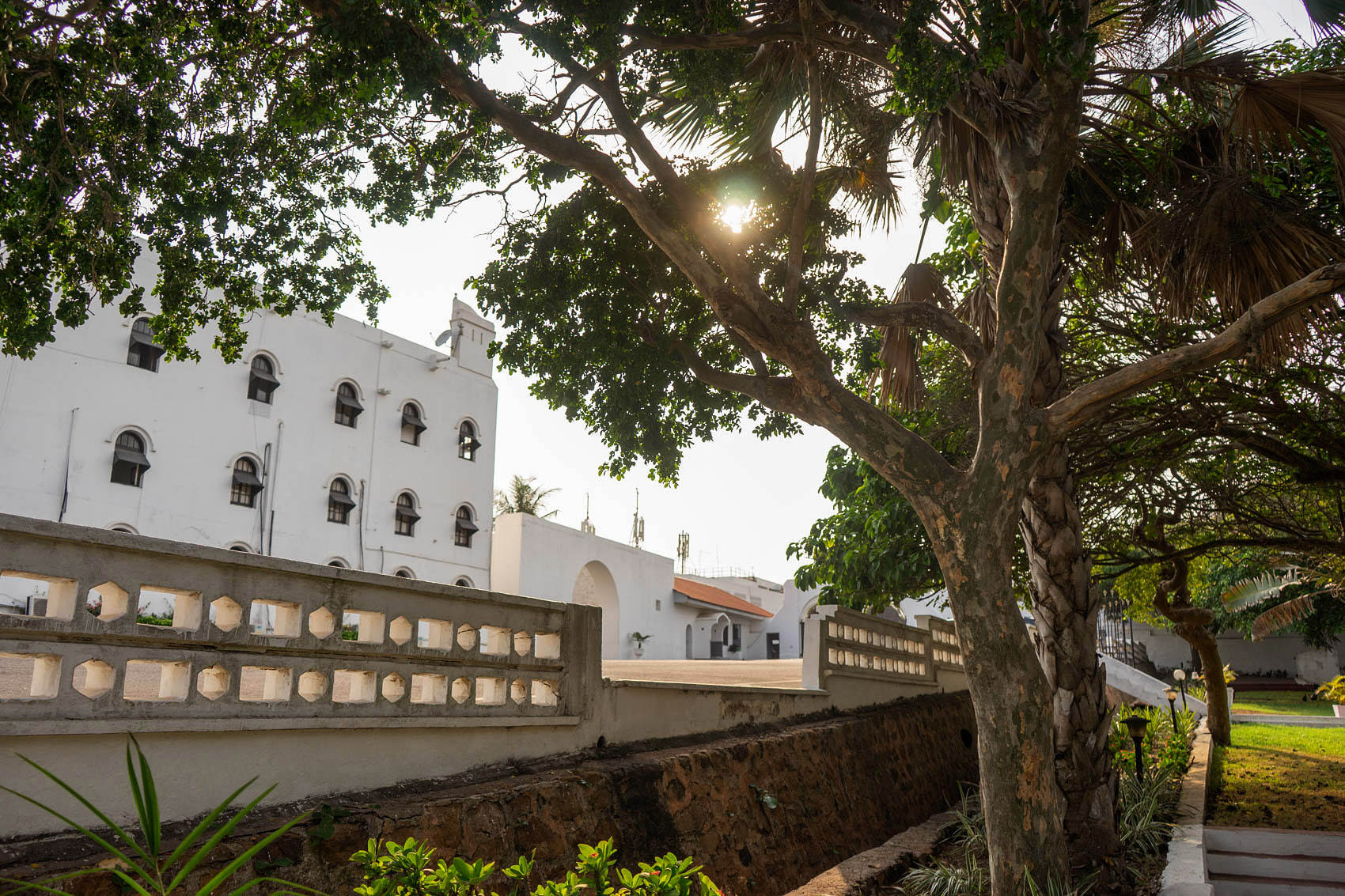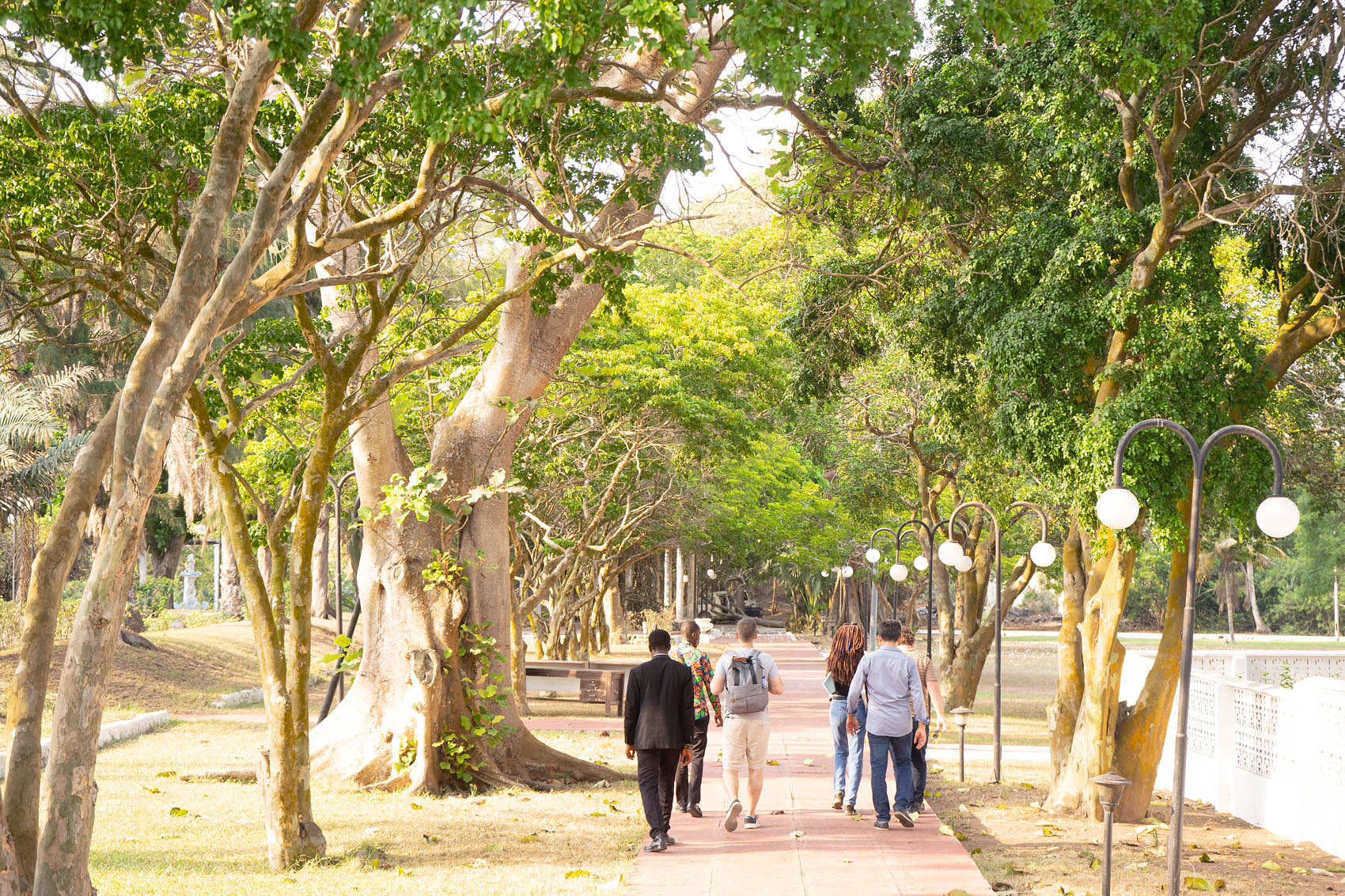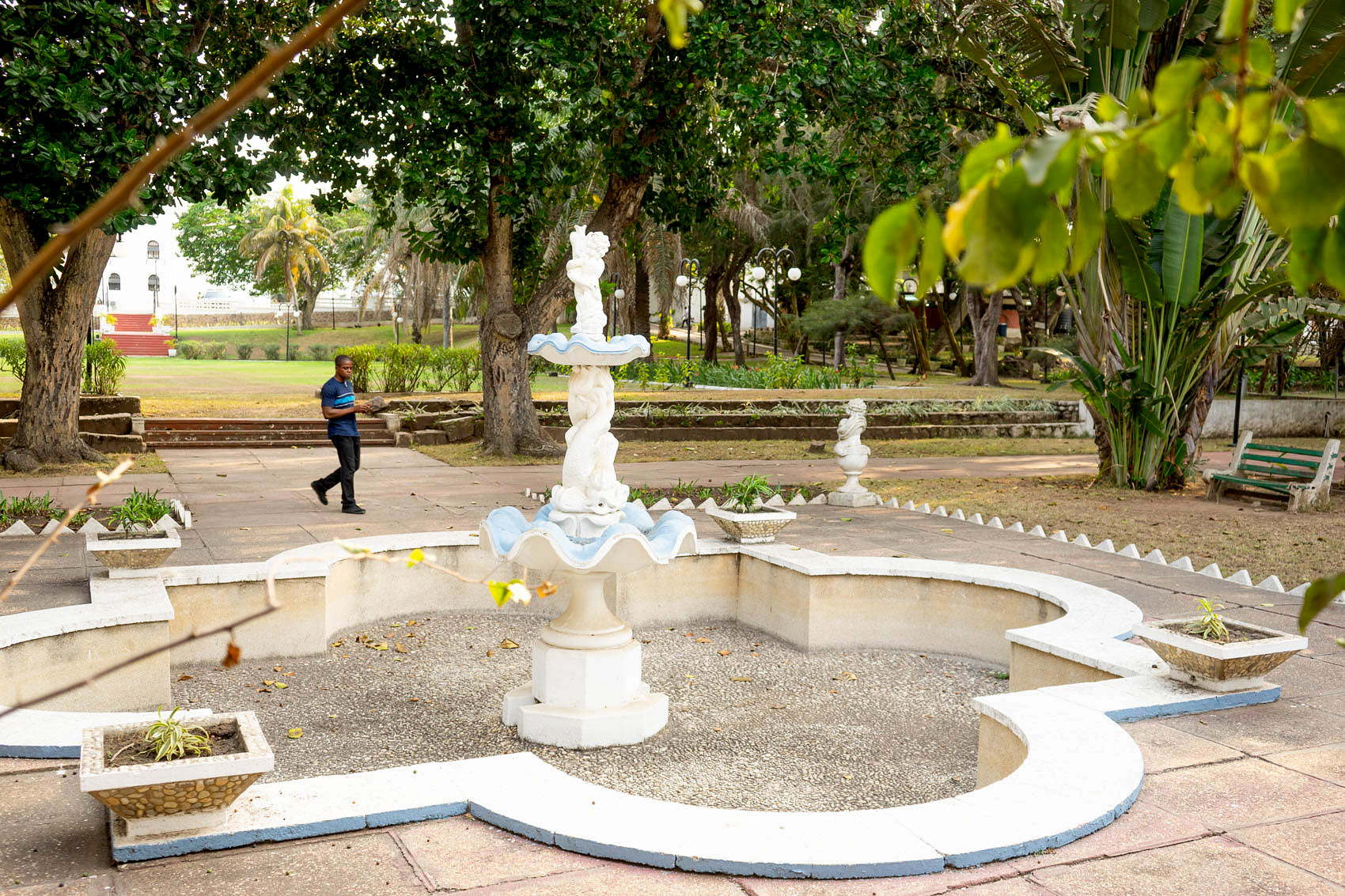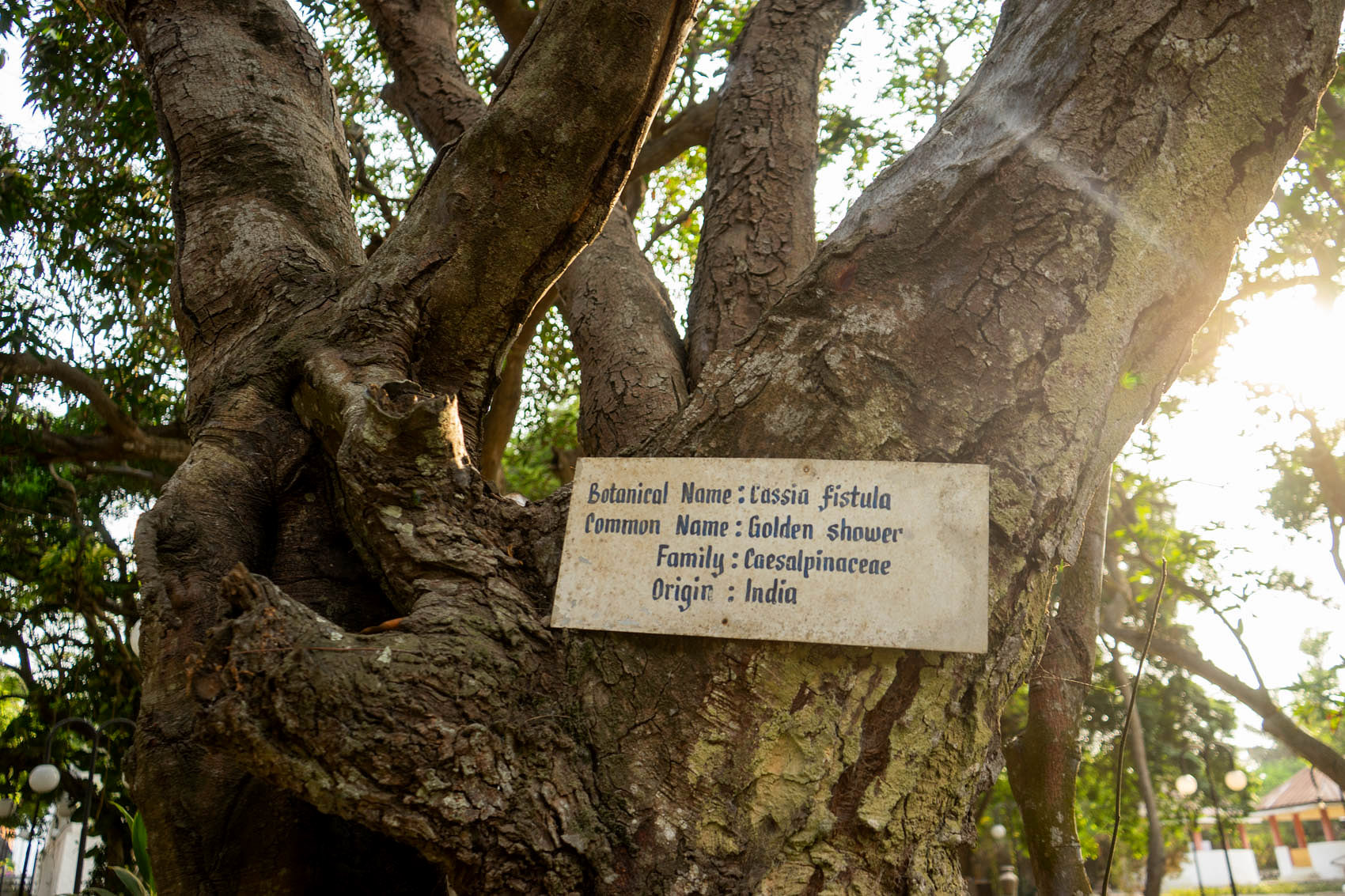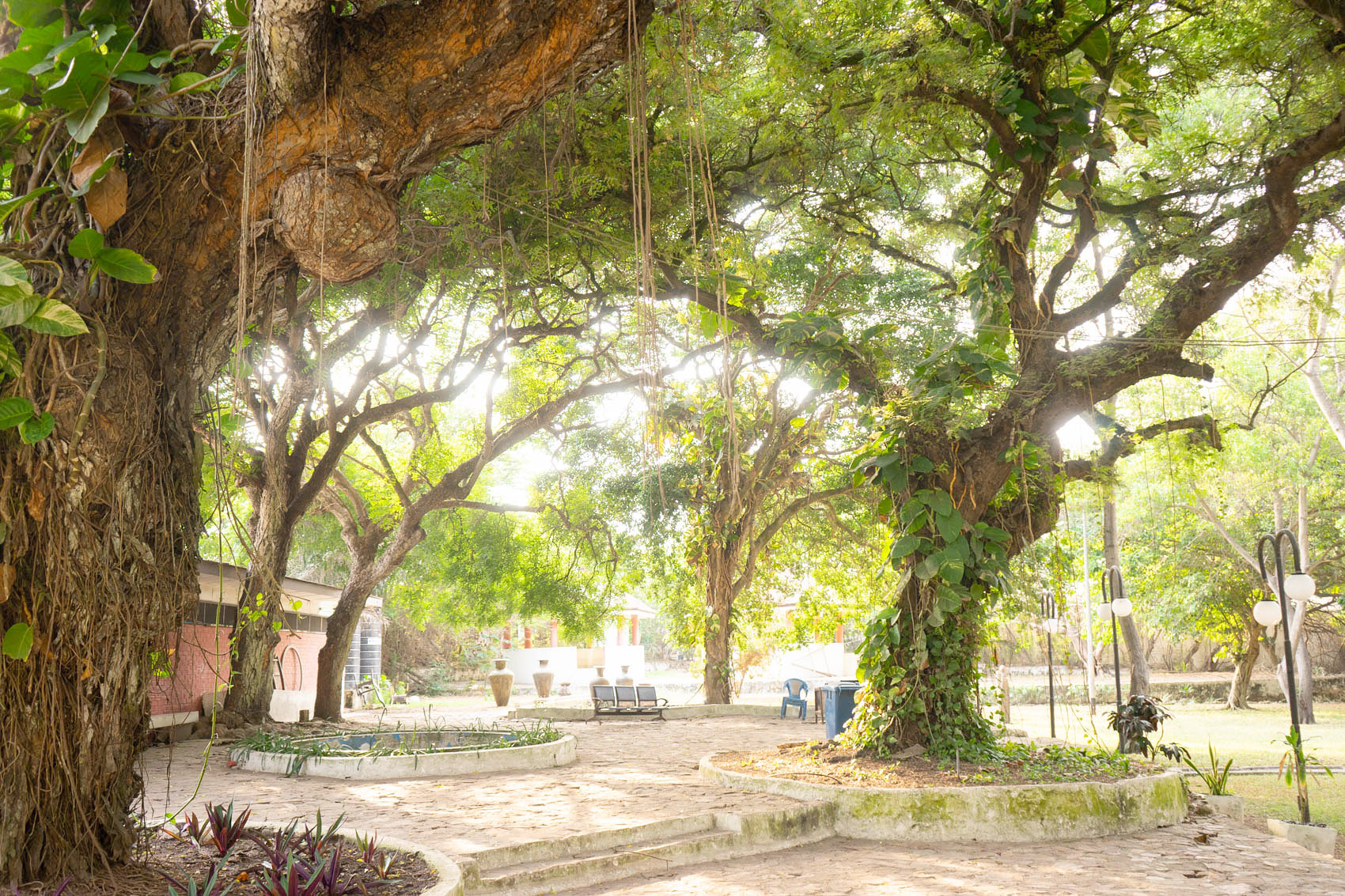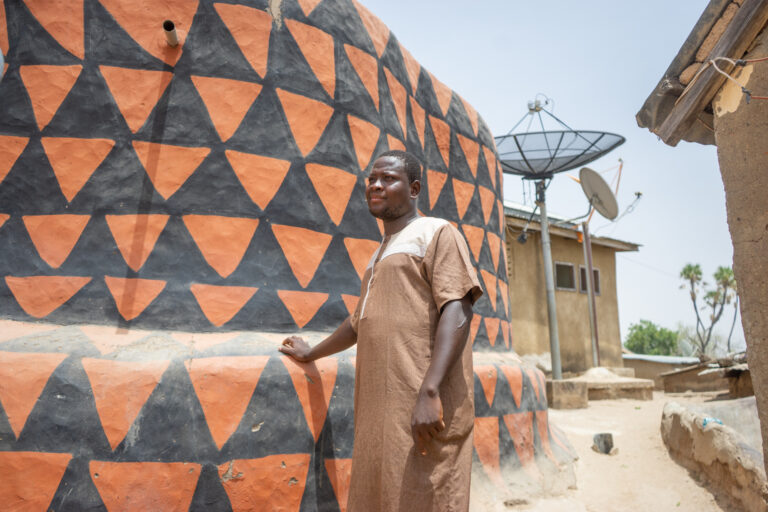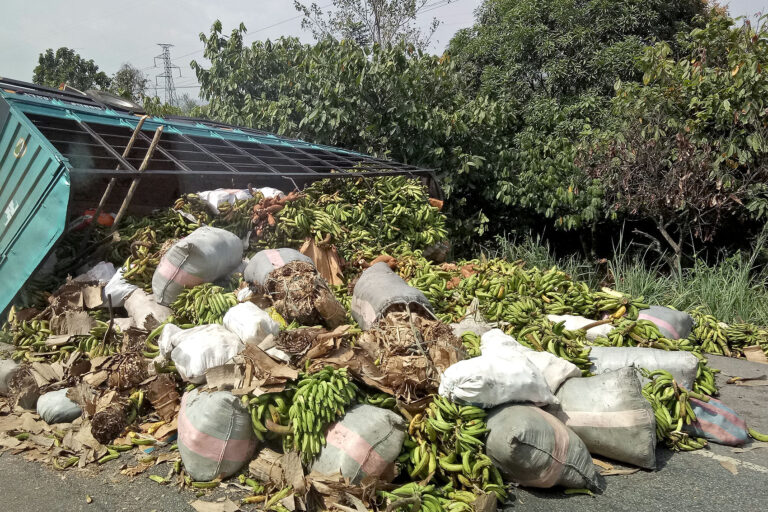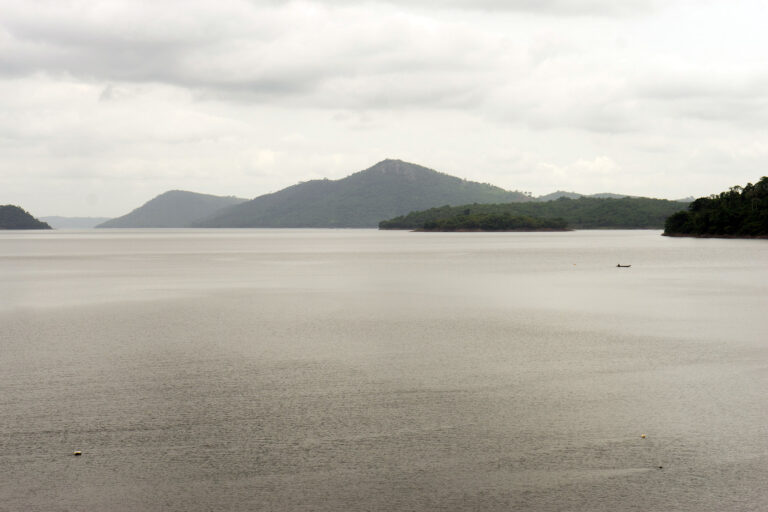Osu Castle
Built by the Danes in 1661 as Fort Christiansborg, Osu Castle has long been at the center of Ghana’s commercial and political life. From within these white walls, foreign powers have ruled, slaves have been traded, and presidents have lived. We took an excellent tour of the grounds, learning a lot about Ghana’s history in the process.
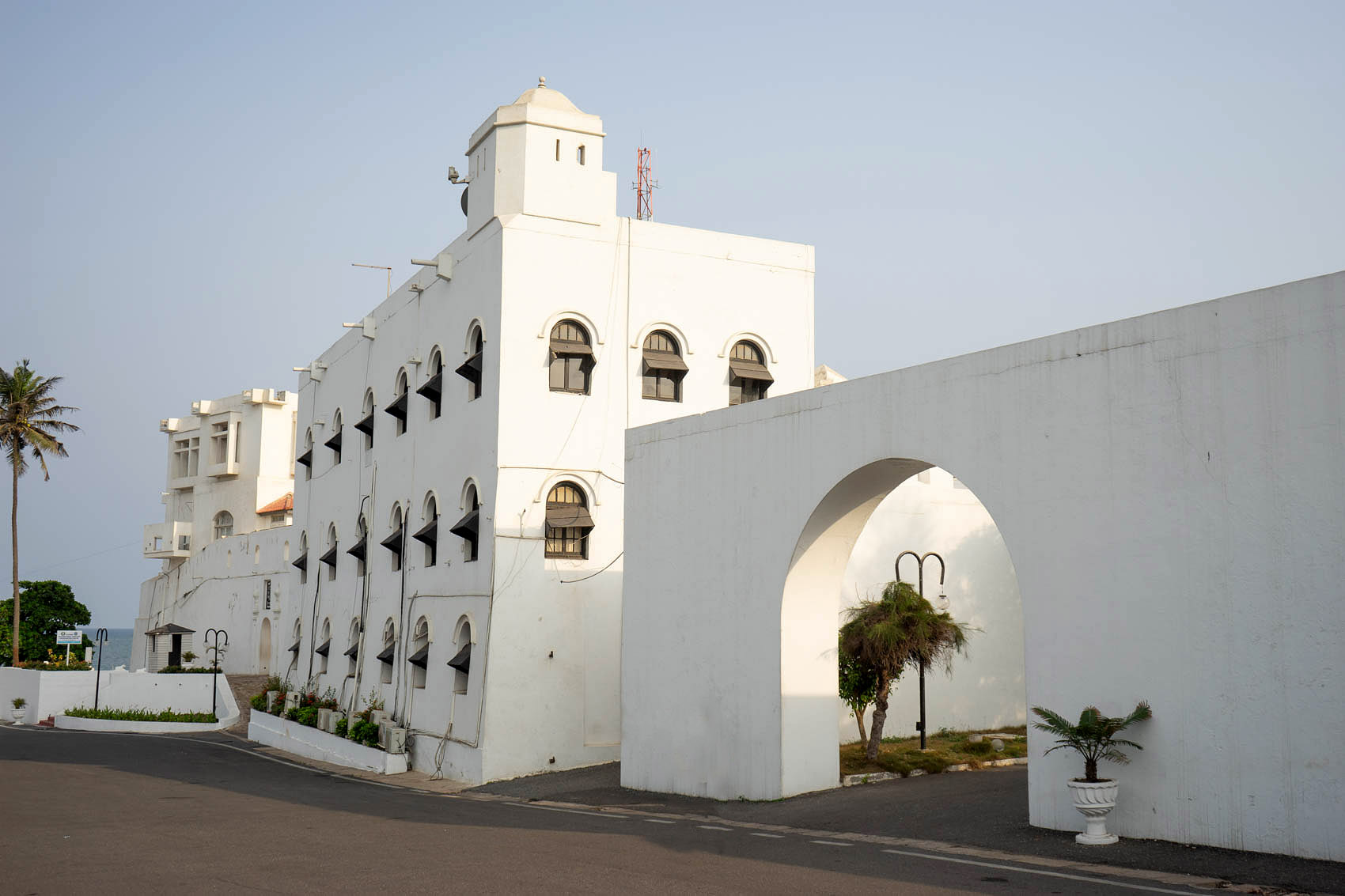
Despite its storied past, Osu Castle is not currently being used for much of anything. Ghana’s presidents had resided here since independence, but John Kufor broke that tradition in 2008, when he moved to the more modern Jubilee House. There are weekly tours of Osu Castle on Friday, but otherwise the garden and the castle itself are otherwise completely empty.
Our tour began through at the Presidential Stairs, which are prominently featured on the 50 Cedi note. The castle is still used for state events, and the carpeted middle lane of this stairway is still reserved for the president — a fact which didn’t stop one girl in our tour from running halfway up for a selfie, much to the horror of our overmatched guide.
We went up the side stairs, and toured the compound, seeing where Queen Elizabeth slept during a state visit, and the third-story window from which a servant leapt after murdering his master. (He survived the fall, and escaped to Jamestown.) Our tour continued into the banquet hall, decorated with portraits of every Ghanaian president, starting with Kwame Nkrumah. Our guide gave us a short introduction to each of them… a history I had expected to yawn through, but with all the coups and intrigues, it was anything but boring. Then, we moved to the balcony, and enjoyed tremendous views over the Atlantic.
Now, we were led downstairs into the basement, to see the cells in which slaves were kept. Obviously, they were shocking. It’s not like you’re ever going to be led to “Slave Quarters”, and end up thinking… “Not bad! Lucky folk!” Lacking windows, natural light, air, toilets, and even enough room to stand upright, the stay in Osu Castle must have been absolute misery. Many of the slaves died in custody here, well before reaching what they referred to as the “Door of No Return”: the portal through which they’d be herded upon the ships bound for the New World.
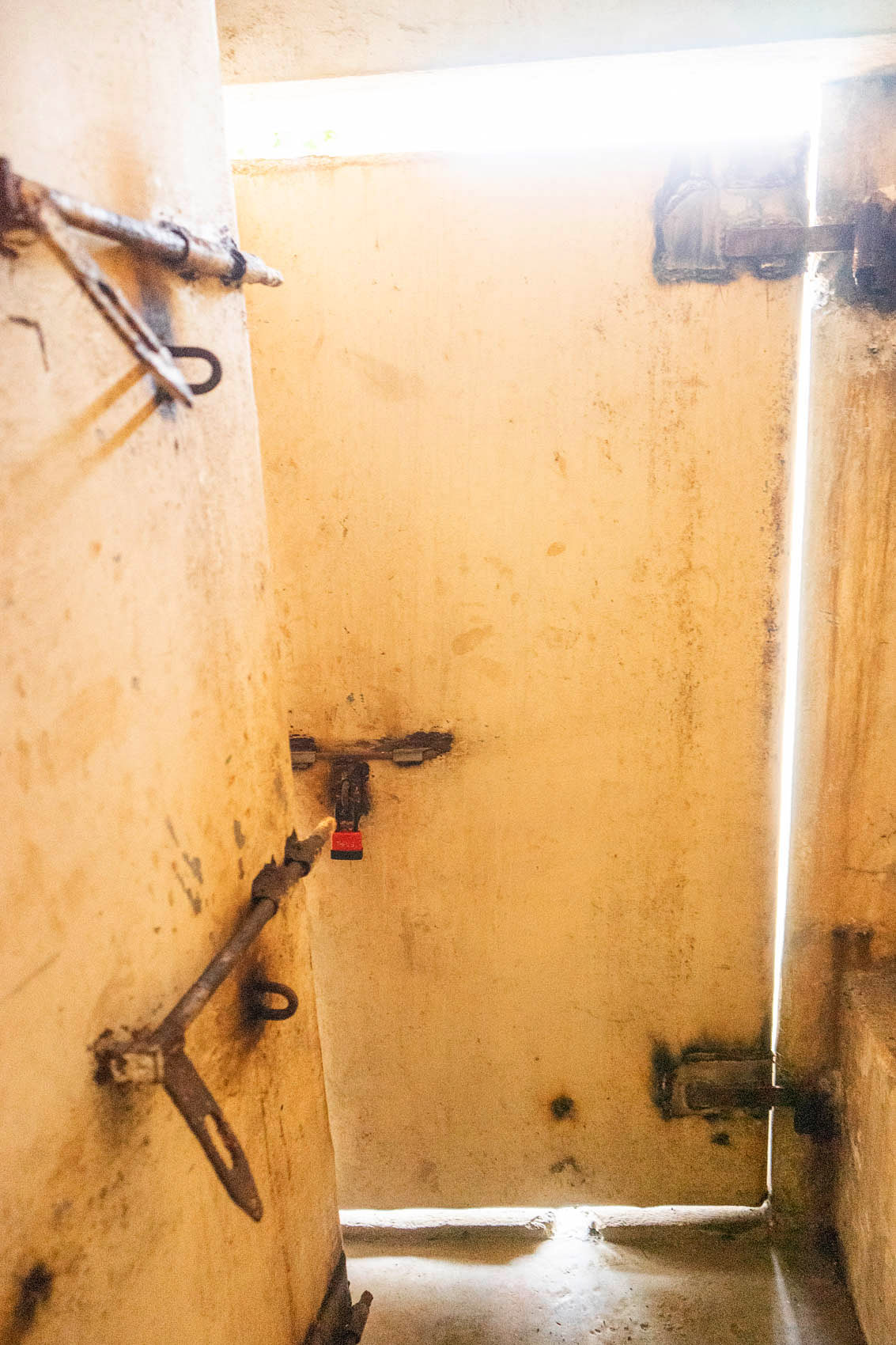
We ended the day in a spacious garden, which the English had landscaped during their tenure in the castle. Isn’t it beautiful? Hey! Look at that tree over there, and please pay no attention to this next sentence (before creating the garden the Brits razed an entire neighborhood and forcibly relocated its inhabitants) and now let’s admire this fleet of old presidential automobiles. Fantastic!

With its sketchy, colonial, slave-y history, Osu Castle is for those who like their grandeur tinged with shame. It’s probably a good thing that the current president no longer resides in a place with such a checkered past, but it’s equally good that the castle has been preserved. The tour we were taking was a new initiative, and there are further plans to restore and reopen the castle to the public. And that seems like the best possible path forward: to neither legitimize, nor forget the history of Osu Castle.
